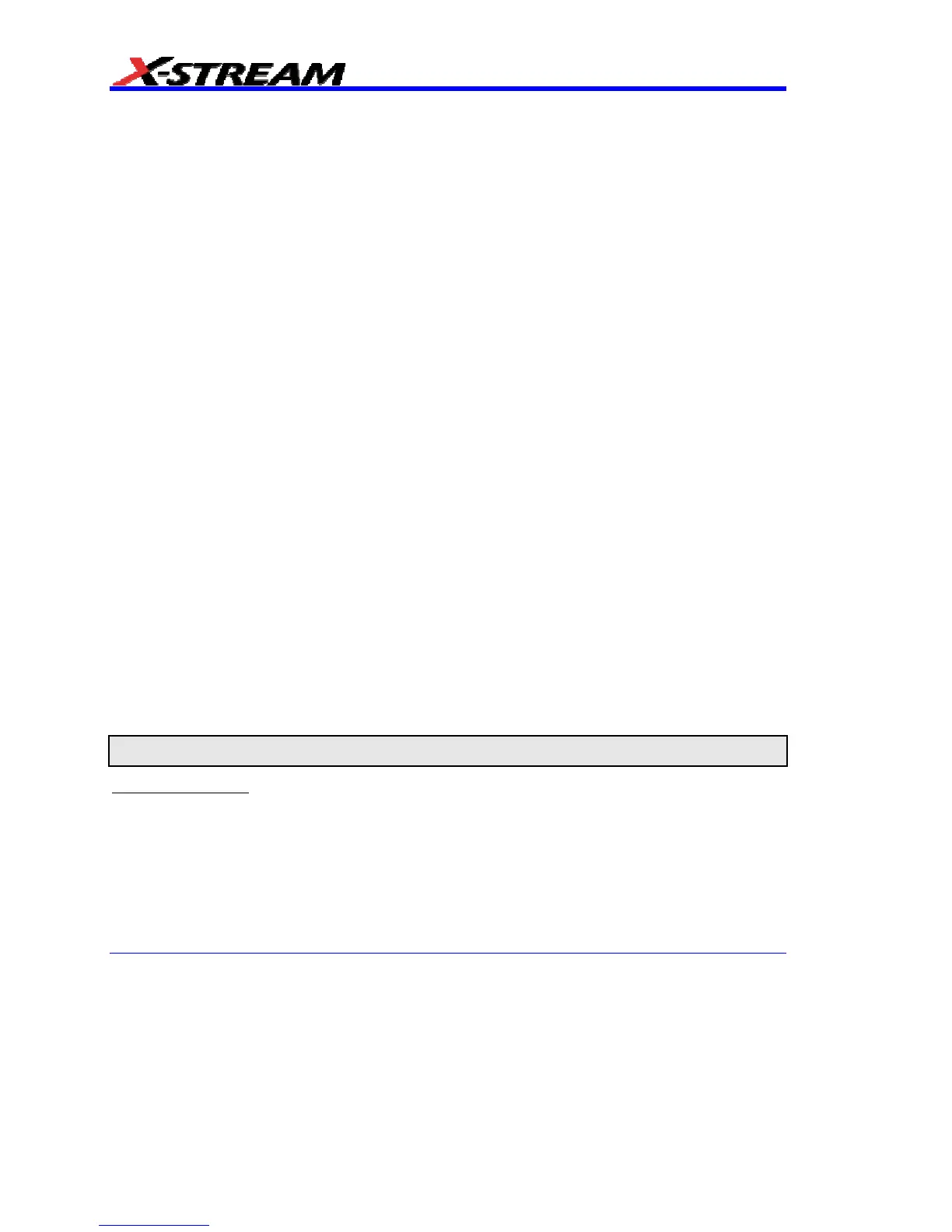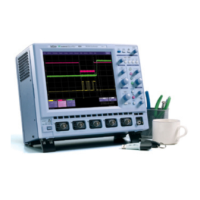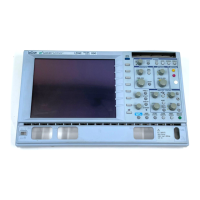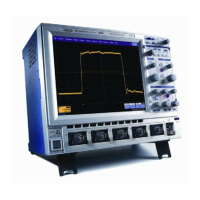216 WM-OM-E Rev I
Rescaling and Assigning Units
This feature allows you to apply a multiplication factor (a) and additive constant (b) to your
waveform: aX + b. You can do it in the unit of your choice, depending on the type of application.`
To Set Up Rescaling
1. In the menu bar, touch Math, then Math Setup... in the drop-down menu.
2. Touch a math function trace tab F1 through Fx The number of math traces available
depends on the software options loaded on your scope. See Specifications..
3. Touch the single function button.
4. Touch inside the Source1 data entry field and select a source: channel, math trace,
memory location.
5. Touch inside the Operator1 data entry field and select Rescale from the Functions
category.
6. In the dialog on the right, touch the Rescale tab.
7. Touch inside the First multiply by checkbox and enter a value for a, the multiplication
factor.
8. Touch inside the then add: data entry field and enter a value for b, the additive constant.
9. Touch inside the Override units checkbox to disregard the source waveform's units, using
the pop-up keyboard.
Averaging Waveforms
Summed vs. Continuous Averaging
For Summed averaging, you specify the number of acquisitions to be averaged. The averaged data
is updated at regular intervals and presented on the screen.
On the other hand, Continuous averaging (the system default) helps to eliminate the effects of
noise by continuously acquiring new data and adding the new waveforms into the averaging buffer.
You determine the importance of new data vs. old data by assigning a weighting factor. Continuous
averaging allows you to make adjustments to a system under test and to see the results
immediately.
Note: Continuous Averaging is accessible from the channel "Vertical Adjust" dialog under "Pre-Processing," and from the
math function menu.
Summed Averaging
Summed Averaging is the repeated addition, with equal weight, of successive source waveform
records. If a stable trigger is available, the resulting average has a random noise component lower
than that of a single-shot record. Whenever the maximum number of sweeps is reached, the
averaging process stops.
An even larger number of records can be accumulated simply by changing the number in the dialog.
However, the other parameters must be left unchanged or a new averaging calculation will be
started. You can pause the averaging by changing the trigger mode from NORM/AUTO to STOP.

